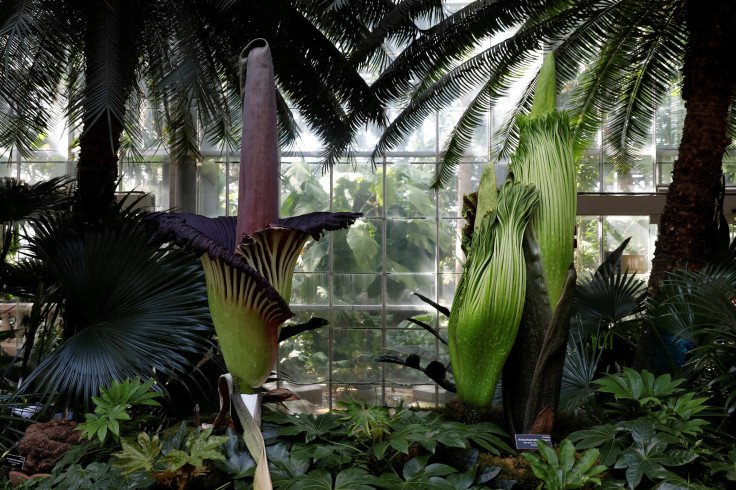Corpse Flower Facts: Rare Stinky Plant Ready To Bloom In California

A so-called corpse flower, infamous for its smell which is similar to that of a decomposed body, is all set for its rare bloom at the Huntington Library in Southern California on Tuesday. Nicknamed “Li’l Stinker,” this plant's formal name is Amorphophallus titanum and it is native to the rainforests of Sumatra, Indonesia.
Brandon Tam, an orchid specialist at the Huntington, said the plant that can go up to a decade between blooms will not only reveal its colorful maroon interior but its even more notorious smell. This is the sixth corpse flower to date at the institution in suburban San Marino. The previous bloom on Aug. 23, 2014, reached a height of 5.5 feet.
“The problem with these flowers is that it’s always hard to tell because they always have a mind of their own, depending on the weather, depending on if it’s ready to bloom,” Tam said, according to the Associated Press.
The plant is called “Li’l Stinker” because at 3.6-foot it is smaller than a typical corpse flower, according to the Huntington.
According to Tam, the plant typically takes 15 years to reach a mature blooming size, and there are now 45 in Huntington’s collection. The plant is 16 years old and is the offspring of a 2002 blooming.
“We’re getting to that age where they’re all about to bloom fairly soon,” Tam said, adding dozens arrived at Huntington on Monday morning to see the plant bloom and release the odor.
The corpse flower blooms when the leaf-like spathe pulls away from the spadix — a spike of flowers around a fleshy stem. After blooming, it releases the foul odor that attracts insects which aids pollination. The plants foul odor usually lasts only 24 hours after it blooms.
According to research conducted on the corpse flower, the stench is dispersed by the heat the flower generates as the phallus-like bloom emerges. Other contributors to the stench are dimethyl disulfide, which strikes a garlic note; isovaleric acid, which contributes to the smell of sour sweat; and methyl thiolacetate, with an odor that blends garlic and cheese.
© Copyright IBTimes 2025. All rights reserved.





















